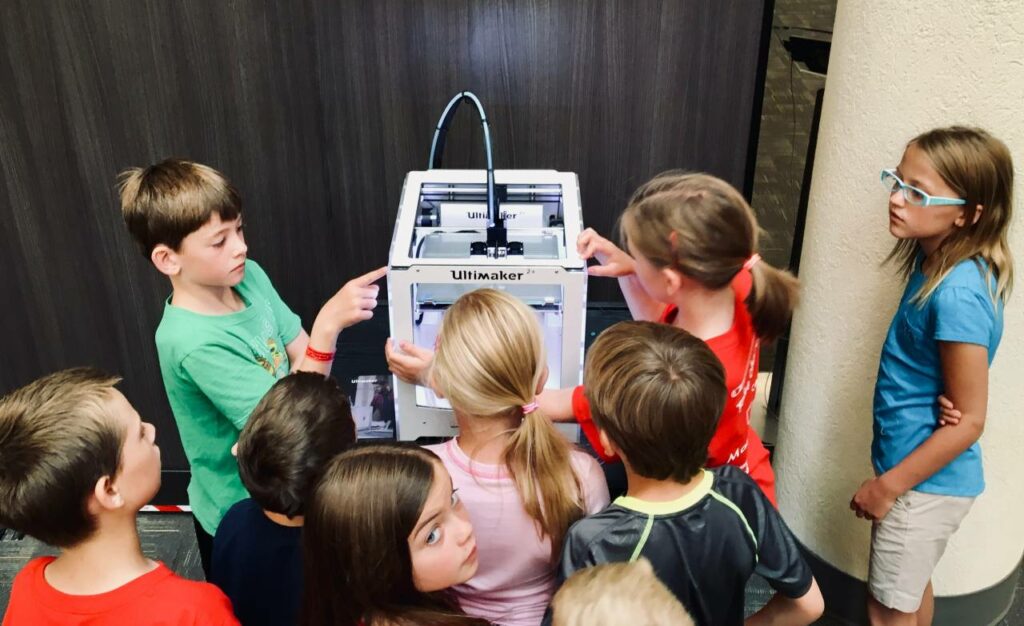How to Design and Administer Surveys
As library workers, we all know the anecdotal importance and significance of what we do for our customers. There is something to be said though for measuring those sentiments with surveys and data. Surveying customers can be a daunting task that we want to get right. This How-To Guide is designed to be a simple starting place. We’re aiming to help you design and administer surveys by providing some insight, tips and tricks, and basic survey templates in order to produce quality information that will provide maximum benefit to your organization. Surveys can be an extremely useful means of efficiently gathering data about your library users’ attitudes, knowledge, behavior, experiences, and demographics. We strongly recommend that you take the time to consider your particular community when designing and administering your survey – all of our communities are unique and should be surveyed as such. We hope this resource will help you get started collecting data with your respondents’ needs in mind.
While the following questions, tips, and survey templates are intended to point you in the right direction as well as save you time and resources, it is important to consult with others in your organization, and—if possible—with a research professional, when planning or administering surveys. Before designing a survey, the most important points to consider are what your information needs are and what the characteristics of the respondents are.
Templates for Common Types of Library Surveys
Here are five common types of library surveys each containing some of the four content types (described below). You’ll also see templates for each survey type which you can use as a jumping off point for your survey. Click on each survey title to download example questions. As you design your survey, feel free to use our questions and content, but make sure that it all pertains to your specific customer base and your information needs. Remember, these templates are only a suggestion, though you’re welcome to copy and paste our content for your own survey.

A usage survey can help you determine how people are using your library. For example, is it a quiet study space? Do people love to come read the paper? Or is it the amazing children’s section that people use the most? Do folx only come for programs, or to check out materials, too? If so, how often?
This type of survey helps you measure the successes, and potential problems with your library program. This could be everything from a toddler STEAM program, to a college research program, to a meditation class for older adults.
Every now and then libraries get a revamp! When this happens, it’s important to get community input for the vision of the future library as a space and place. Space might include things like furniture and ambience. Place gets to the question of what the library is to a person- do they see it as a place of shelter? Learning? Tranquility? What your customers want can help determine the vision for your library’s future. It’s worth noting that surveys aren’t the only way to get at this- other ideas include asking people to draw pictures of themselves in the space, providing a place for people to share one aspect of their dream library, focus groups, and community needs assessments.
A satisfaction survey helps you find out if customers are content with the library in general. Do they think that the library is a cornerstone of their community? Is the customer service excellent but the collection lacking? This gives you a general idea of whether or not people like the library.
Creating a collection of books, databases, and other resources that customers actually want and need can be a complicated task. This type of survey helps determine whether or not you’ve succeeded, and where you can grow or shrink.
What are your information needs?
- What is the big question I’m trying to answer? Examples include:
- Should I do this program again?
- What are the demographics of my customers?
- Is my library accessible for people with all levels of ability?
- Who are the stakeholders and how will this affect them? Consider checking in with them before administering a survey. Stakeholders might include:
- Your supervisor
- A library board
- A funder
- A partner organization
- How much information do I need? An important guideline is to never collect more information than is absolutely necessary so as not to unduly burden survey respondents or create unnecessary privacy concerns. Also consider whether your information needs could be met through existing data, such as circulation statistics or community analysis
- How will I present the data? In all instances, it is best to think about how you will present your data before designing and administering the survey. Using backward design will make achieving your end goal (analysis or presentation) much easier. Think through these steps:
- How do I want to present this data?
- How will I analyze the data?
- How can I collect data to make it easy to analyze?
- How can I successfully collect the data I need?
- Who will be answering this survey?
- What questions should I ask?

Who are your respondents?
When conducting a survey, it’s vital to consider who your respondents are. Take a step back and consider whether your survey is accessible and inclusive, as well as if it’s trauma-informed. In order for your survey to be accessible, consider:
- The language that people speak. Consider using a translation service (American Translators Association is a good place to start.)
- Respondents’ physical and cognitive abilities
- Respondents’ access to technology
- Respondents’ level of familiarity with library jargon. For example, you may need to explain terms like “collection” by giving examples such as “books, DVD’s, music, etc.”
- The age you’re surveying– if you’re trying to figure out if toddlers liked a program, their adult will need to answer for them. Make sure you word your survey to reflect this.
- The use of a hybrid survey (using multiple delivery methods to reach your respondents).
You also want to make sure that you have a sample size that allows you to generalize your survey results to a larger population. A good sample should be representative of the population it speaks for in all characteristics except size (for example, proportions of male to female, old to young, education levels, etc.). Before distributing your survey, identify your target sample size using a tool such as a sample size calculator. You can also consider offering respondents an incentive to encourage participation. When asking people to participate in a survey, it’s important to be respectful and avoid assumptions. For example, if you’re doing a survey about services to people experiencing homelessness, do not assume based on someone’s appearance that they may be unhoused. Also, be flexible; for example, parents may start filling out a survey, and need to leave halfway through because their baby is crying. Always remember that even though numbers are the end result, our customers are much more than that: they’re people first and foremost.
User habits refers to customers’ behaviors (e.g., “How often do you use the library in a typical month?”). Learning which services are most utilized and how often is an objective way to assign their value. This may be important information to collect if you are considering changing your services or collections to better meet user needs. Always consider whether circulation statistics or other such data are already available which could answer your question. Using existing data will prevent needlessly bothering your users with an unnecessary survey.

This content is designed to determine what, according to its users, the library is doing well and what areas can be improved. These questions allow your survey takers to share their opinions about the library’s services and will provide a better understanding of why certain collections and services are valued over others. Before drafting a satisfaction survey, it is wise to consider whether it is really necessary or if this information can be obtained by other means, such as comment cards.

Outcomes can be described as what was accomplished or gained by using the library. For example, you may want to learn whether caretakers and children attending storytime together leads to more time spent reading together at home. When measuring outcomes, it helps to think ahead and begin your evaluation as early as possible to reveal how use of library services changes behavior over time. In this example, collecting a baseline assessment of time spent reading together at home when caretakers and children attend their first storytime session together will make it easier to measure the outcomes of this service further down the road.
In this case, time spent reading at home can be measured quantitatively, however, outcomes can be challenging to measure this way. For example, if your goal was to learn more specifically whether children’s enthusiasm for reading together increased, measuring the enthusiasm of a child becomes subjective. Therefore, it’s important to think carefully about the questions you are asking, the purpose of the information you are collecting, and how it will be measured. Keep in mind that, in certain cases, numbers may not be able to tell the whole story, particularly when it comes to the influence of library services.
It may also be helpful to ask users what they hope to achieve by using a particular library service (i.e., intended outcomes) which can give you a better sense of how to proceed with an evaluation of a service.

Demographic content provides you with respondents’ educational and cultural backgrounds, age, gender, and so forth. You may want to collect this information in order to assess the accessibility and/or inclusivity of your services or programs. It also may be important to collect this information to ensure your survey sample is representative of the community you are hoping to hear from. As with any content, consider whether this information is essential before including it in your survey design. You might also consider whether a survey is the best means of gathering this information or whether you could use customer records, a community analysis or information gathered from databases carried by your local library. When using customer records, there are major privacy considerations. It’s important to not track personally identifying information, such as email addresses, but it is generally ok to track age groups and zip codes to better understand your users. You may also want to consider that the people taking your survey aren’t necessarily registered in your Integrated Library System (ILS). Again, it is important not to ask your users for any information that is not critical to your research question. If you decide collecting this information is crucial to the survey’s goal, ensure that you use inclusive language.

- After drafting your library’s survey, have colleagues proofread it for clarity and to assess the validity of the questions included.
- Avoid questions that ask respondents to rank items (e.g., “rank the importance of the following library services to you from most to least important”). Not only are rankings hard to analyze, but they are also misleading as it’s possible that all of the items asked about could be of equal importance to respondents. A better approach is to ask respondents to rate items (e.g., “rate the importance of each of the following library services to you on a scale where 5=extremely important and 1=not at all important”).
- Use lead-ins for new or lengthy sections to orient and guide the user. For example, if your survey includes a demographics section, title it as such.
- Refrain from using “double-barreled” questions. These are questions that combine 2 or more topics, such that the researcher cannot know which “barrel” of the question was answered. For example, “Do you think that the library is important and would you support a mill levy for increased funding?” If the words “and” or “or” are included in your question, it might be double-barreled.
- Use short questions when possible.
- Carefully consider the placement of each question and set of related questions.
- Number the items consecutively from the beginning to the end.
- Use plenty of white space to ensure that the survey is readable.
- Use an easy-to-read font size and type.
- Do not “break” your questions or carry them from one page to another.
- Include open-ended questions so survey takers can fully express themselves, particularly when covering complex topics.
- Include a closing statement. In addition to thanking customers for participating in the survey, this statement might also include contact information should respondents have any questions or concerns about the survey.
- Consider how the findings of the survey might relate back to your library’s mission, vision and values. This will make your data more valuable for stakeholders within your organization.
- Provide clear instructions.
Distributing Surveys
Determining the characteristics of your sample is important because these factors also affect how you distribute your survey. Surveys can be offered in-person, by phone, mailed, or accessed electronically. Each has advantages and drawbacks. Often, in order for the survey to be accessible to everyone, you may need to use multiple methods to distribute your survey.
Mailing surveys to everyone in your service area, or to a sample thereof, can be a good way to hear from those who do not regularly use the library but is considerably more costly than administering them in-house. Mail surveys also have lower response rates than other delivery methods.
In-person paper surveys are easy to collect and essentially free; however, they only capture information from those who are already using the library or are where the library is distributing surveys, and there may be times you want the views of a population not physically present. Inputting the data from paper surveys into an electronic platform for analysis is time consuming and storing the physical surveys afterwards can be inconvenient or possibly risky if the survey’s contain personally identifiable information. However, there are plenty of instances where paper surveys are an appropriate and effective distribution method.
Cold calling people is challenging because people are increasingly unlikely to pick up and respond to unsolicited calls. However, if people opt in to the survey, administering it over the phone is a great option for those with limited accessibility to the library and/or online services.
Electronic surveys may be distributed by SMS texts, offline apps, web links and emails. These distribution methods can also reach people beyond the library’s walls, but exclude those without access to the technology. Electronic surveys can be vulnerable to security risks or response bias due to a lack of accountability, which can compromise the quality of the data you collect. On the other hand, electronic surveys are a common, budget friendly way to collect a large number of responses and are convenient for both you and your survey respondents.
If a web link to the survey is embedded in your library’s homepage, it won’t be seen by non-library users, and certain people are more inclined to click on this link which may skew your survey results. If you are looking to survey a population that is engaged with the library, this could be a great option.
If you are distributing a survey on location but do not want to deal with paper surveys, there are plenty of offline apps that could streamline the process for you. People would complete the survey on an electronic device such as a tablet or kiosk that saves the data so it can be easily downloaded for analysis later.
Posting a survey on social media is a good way to increase your number of responses, but you may want to also reach respondents with additional methods to ensure your survey is available to those who are not regularly on social media.
As a more direct way to reach your customers and a specific population, email is a great option. Emailed surveys will be overlooked by some, but those that do decide to participate have the convenience of completing the survey on their own time.
In this day and age many platforms used to create electronic surveys offer the option to distribute these surveys through text messaging as well. Similar to emails, these surveys may be ignored by some but are a great way to hear from a specific population if that population communicates through text.
*Note: If you plan to contact customers by email or text, it is important that you first receive consent to do so. It is not ok to use personally identifying information (PII) found in ILS records to distribute surveys. Using this PII without customer consent violates library privacy laws and is fineable.
Privacy is an important issue to consider when surveying your customers. Some topics might be sensitive, and therefore people might want to remain anonymous. If this is the case, it is crucial that you honor their anonymity. It’s advisable to have a plan in place before beginning your survey so that you know how you’ll securely store the information you receive and how (and when) you’ll properly dispose of it. When in doubt, collect personal information only if it’s absolutely necessary, and don’t hold onto any personal information you do collect any longer than necessary. If you’re doing a survey that requires individual follow up, then it is ok to collect customer information so long as they consent to it and know how their information will be kept safe. As for all survey questions, the golden rule is to collect only what you need.
As previously mentioned, the use of customer information from an ILS in order to survey them is generally not acceptable. Chances are, your customers did not consent to having their information used for this purpose. Check with authorities at your library before pursuing this option. If it is ok to mail surveys, you should consider who might be on the receiving end. This is especially important when surveying a minor- their rights to use the library are the same as adults, but not all adults may know that they’re children are visiting the library. Be mindful to not create sticky situations such as this. In terms of online surveys platforms (both web-based and apps), double check the company’s privacy policy to ensure that they’ll securely store data and won’t harvest your customer’s information.
What’s next?
How you analyze the data resulting from your survey is dependent upon how your survey was administered, i.e., whether it was an electronic or paper survey, and upon the types of questions included therein. Some platforms used to distribute electronic surveys, such as Alchemer and Survey Monkey, have built-in features for data analysis as well. You may also choose to use databases or statistical software. Regardless of your data collection method and the tools available to you, here are a few tips to keep in mind as you move into your analysis.
- Ensure you have clearly defined the question or questions you want to answer. (Ideally this takes place before data collection, but if the questions have evolved, make sure you still have complete understanding of your end goal.)
- Clean the data you have collected. This involves removing unnecessary or inaccurate data and organizing it so you can focus on the pieces that will be most useful to you.
- Start by looking at basic descriptive statistics, meaning statistics that summarize your data. As well as being revealing in and of themselves, descriptive statistics can provide important context as you move into more complex analysis.
Qualitative data, such as comments, can be analyzed in-depth through coding or simply used as anecdotal evidence by identifying outstanding comments about, for example, what your library means to the community it serves.
If resources allow, consider hiring a research professional to analyze and present your data. Feel free to reach out to us at lrs@lrs.org with any data-related questions to receive free assistance from LRS on your project. Remember, conducting your analysis and presenting your findings will be much easier if you always keep your end goal in mind while creating and distributing your survey.
You can find our previous survey templates, which are based on the length of survey you wish to administer, below:

